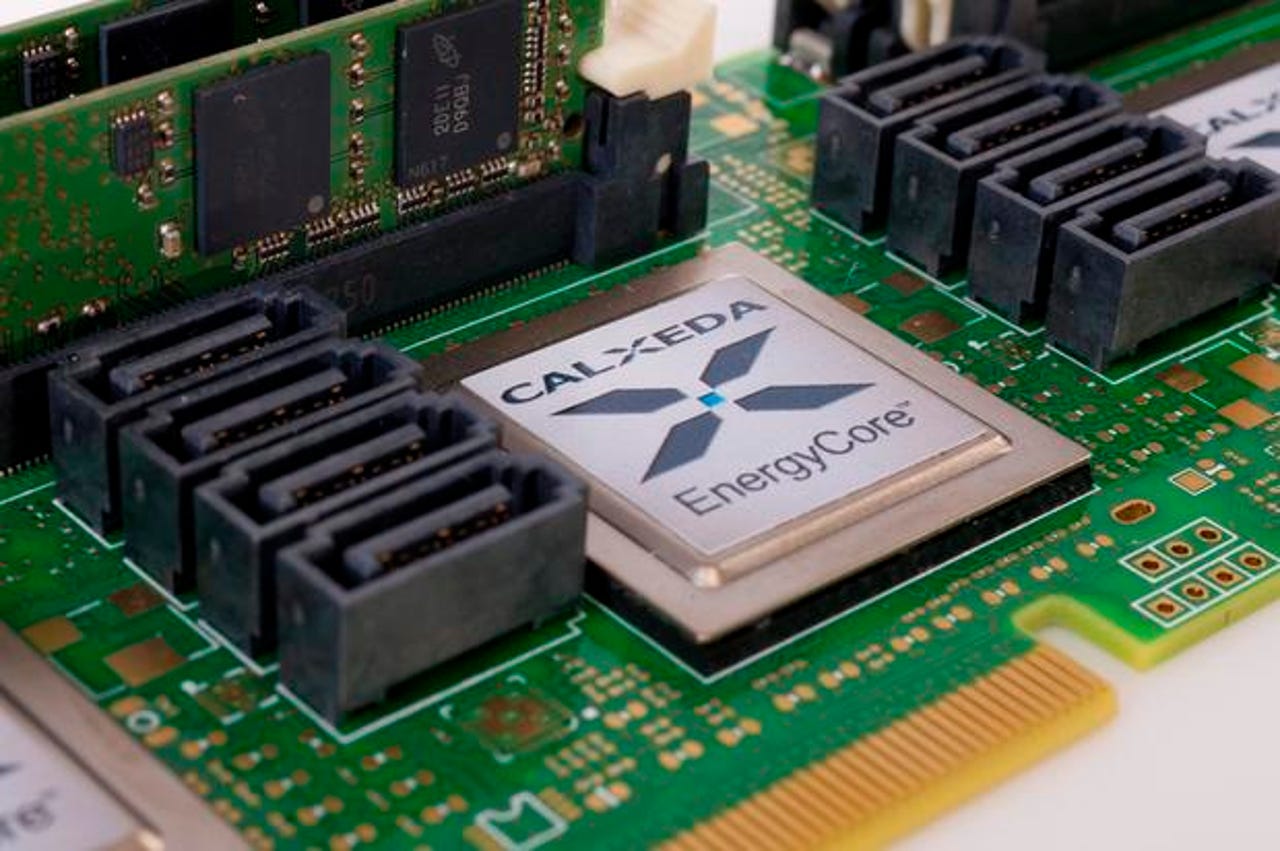What the death of Calxeda means for the future of microservers


In 2013, microservers were widely hyped as the future of the data center. Increased demand for scalable computing led companies like HP to allocate resources to building servers for specific applications. HP announced their first moonshot microserver with an Intel Atom processor in April 2013 and later announced an ARM-based server with chips from chip-maker Calxeda.
Early conversations around Calxeda regarded the chip-maker as the pioneer company who would finally bring ARM-based technology from smartphones to servers. ARM was finally making a move against big brother x86, and even HP executives noted that ARM and x86 would coexist for years in data centers.
Then, out of nowhere, Calxeda vice president of marketing Karl Freund and president Barry Evans released an ominous statement about a need to restructure the operation. The message, which came in December 2013, read more like a goodbye letter.
"Calxeda is proud of what we have accomplished, the partners who have collaborated with us, the investors who supported us, and the visionary customers who have encouraged us and inspired us along the way.
"We will update you as we conclude our restructuring process. In the mean time, we want to thank you personally for your interest and enthusiastic support. It's been an amazing journey," the message said.
Calxeda had played David to Intel's Goliath and they had lost. They ran out of steam and they ran out of runway. This was due, in part, to timing.
Living in the past
Microservers offer a smaller, low-cost alternative to big, enterprise-level servers powered by Intel chips. They typically cost less to run and have a smaller physical footprint than their business-minded cousins. Much of the interest in microservers has come from web hosting companies. While they cannot not handle complex workloads very well, they do scale out efficiently.
One of the big challenges that Calxeda faced was that when it started making chips for microservers, it was making 32-bit chips. While 32-bit chips were still a common consumer option in smartphones, enterprise servers had long since moved past 32-bit. Apple led the way in 64-bit ARM chips with its A7 chip for the iPhone 5S in late 2013, but Calxeda did not see the writing on the wall. According to Sergis Mushell, a principal research analyst at Gartner, they should have pivoted and switched to 64-bit chips for microservers.
"If the future architecture is here and now, why would I want to work with yesterday's architecture," said Mushell.
The main problem with a 32-bit chip for a server is that it limits the addressable memory to 4GB. While the 4GB memory limit is often referenced as a cap on installed RAM, it actually affects a few other things as well. The targeted audience for microservers were web hosting companies and cloud companies, but a 4GB limitation severely impairs the potential for virtualization and makes it difficult to properly maintain a cloud operation. It should be worth noting that, for example, Rackspace, typically no longer supports 32-bit servers.
Whether 64-bit didn't come quick enough to ARM, or Calxeda didn't pivot fast enough to address the potential for a 64-bit ARM architecture, the issue still exists that 32-bit is not something that system admins could go back to.
Missing the target
Microservers are perfect for the type of company that needs to power a high volume of lightweight workloads which would make it perfect for web companies. However, being that the majority of web companies' software was architected with x86 in mind, it would have to be rewritten to work within an ARM architecture. Even Microsoft had to rewrite Windows as Windows RT to run on ARM, and it required all apps to be rewritten as well.
"The only companies that own every line of their code are these web giants like Google and Facebook. These are the guys that have these large data centers, so everyone wants a piece of that action," Mushell said.
So, Calxeda did have an audience outside of web hosts; but, they weren't able to convince these online monoliths that they could offer them something that x86 couldn't. They weren't able to prove a value proposition for ARM-based microservers.
Even so, most companies that produce something this disruptive at least get acquired for talent. So, why hasn't an ARM powerhouse like Samsung or Qualcomm snapped them up yet? The technology would definitely be a resource to either company, but Mushell said that it's hard to put a value on what Calxeda did.
"Their core competency [of Calxeda] was the fabric, not the IP. Most of the IP was standard library IP, and anyone can go and license that. So, to put a valuation behind a fabric would be very difficult," Mushell said.
The performance of the Calxeda chips was based on the internal structure, also referred to as the fabric, and no company had yet to place a value on that fabric. Right now, Calxeda is probably in fire sale mode, trying to dump what they can and make back at least some of what they put into it. If that's not the case, they could be trying to relaunch or they could be in talks with vendors like HP or Samsung about an acquisition deal.
The future of ARM-powered microservers is not grim, it just isn't right now. Much like the slow rise of SSD technology, the major market doesn't yet exist for microservers. ARM architecture, especially, is too specialized to make a play right now, but that might change over the next few years, especially as 64-bit ARM chips evolve. That means that, for now, microservers will primarily be powered by lower-power x86 chips like the Intel Atom and the AMD Opteron X-Series.